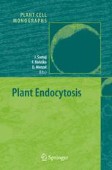Search
Search Results
-
Regulation of the heat shock response by heat shock transcription factors
The heat shock response is characterized by a rapid and robust increase in heat shock proteins upon exposure to protein-damaging stresses. This...
-
Template-induced protein misfolding underlying prion diseases
Proteins with prion properties are closely associated to a class of fatal neurodegenerative illnesses in mammals and to the emergence and propagation...
-
Systems Biology: necessary developments and trends
At the end of this definition of Systems Biology through exampling, we discuss ambitions, goals, and challenges relating to this new discipline. We...
-
Conserved ribosomal RNA modification and their putative roles in ribosome biogenesis and translation
rRNA maturation requires extensive covalent modifications of riboses and bases. These modifications concern exclusively the most conserved regions of...
-
Biosynthesis and function of tRNA wobble modifications
Post-transcriptional modifications at the first (wobble) position of the tRNA anticodon participate in the precise decoding of the genetic code that...
-
From isolation to integration, a systems biology approach for building the Silicon Cell
In the last decade, the field now commonly referred to as systems biology has developed rapidly. With the sequencing of whole genomes and the...
-
Histone Ubiquitylation and the Regulation of Transcription
The small (76 amino acids) and highly conserved ubiquitin protein plays key roles in the physiology of eukaryotic cells. Protein ubiquitylation...
-
The Generation and Recognition of Histone Methylation
The posttranslational modification of histone proteins via methylation has important functions in gene activation, transcriptional silencing,...
-
Histone Dynamics During Transcription: Exchange of H2A/H2B Dimers and H3/H4 Tetramers During Pol II Elongation
Chromatin within eukaryotic cell nuclei accommodates many complex activities that require at least partial disassembly and reassembly of...
-
Folding of newly synthesised proteins in the endoplasmic reticulum
The endoplasmic reticulum (ER) is a membranous compartment that can be found within any nucleated eukaryotic cell. Its job is to oversee the...
-
Mouse Models of Cell Cycle Regulators: New Paradigms
In yeast, a single cyclin-dependent kinase (Cdk) is able to regulate diverse cell cycle transitions (S and M phases) by associating with multiple...
-
Sterol Endocytosis and Trafficking in Plant Cells
Structural sterols are integral components of biological membranes. They regulate membrane permeability and fluidity, and they influence the...
-
Comparison of Molecular Mechanisms of Somatic and Zygotic Embryogenesis
Somatic embryogenesis has been used as a model system to understand the mechanisms regulating plant embryogenesis. The morphological and...
-
Extracellular Guidance Cues and Intracellular Signaling Pathways that Direct Pollen Tube Growth
Fertilization in flowering plants requires that a pollen tube deliver two sperm to the female gametes, which develop in ovules buried deep within...
-
SNAREs in Plant Endocytosis and the Post-Golgi Traffic
In eukaryotic cells, the transport vesicles carry various cargo proteins from a donor compartment to a target compartment, and discharge the cargo...
-
Plant Vacuoles: from Biogenesis to Function
The plant vacuolar system is far more complex than originally expected and multiple sorting pathways leading to various types of vacuoles can be...
-
Endocytosis in Guard Cells
Stomatal movement requires large and repetitive changes to cell volume and consequently surface area. These alterations in surface area are...
-
Endocytosis and Actomyosin Cytoskeleton
Mutual interactions between actin and endocytic assembly machineries are essential for successful clathrin-mediated endocytosis in yeast and...
-
Endocytosis and Membrane Recycling in Pollen Tubes
In plants, tip-growing cells are an ideal system to investigate signal transduction mechanisms and, among these, pollen tubes are one of the...
-
Plant Prevacuolar Compartments and Endocytosis
Prevacuolar compartments (PVCs) are membrane-bound organelles mediating protein traffic from both Golgi and plasma membrane to vacuoles in...
